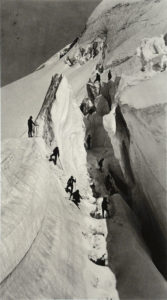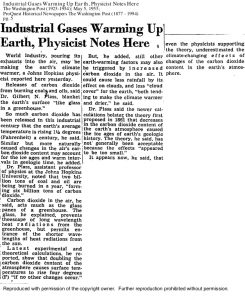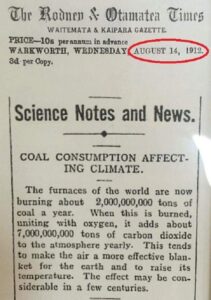It was another deadly year for environmentalists according to Global Witness, an NGO keeping track of the horrific slaughter.
It was another deadly year for environmentalists according to Global Witness, an NGO keeping track of the horrific slaughter.
Comments Off on 2021: Another deadly year
Posted in Environmental justice
Comments Off on Leaded gasoline centennial interdisciplinary zoom panel Dec. 9, 2021
Posted in Environmental justice, Technology & environment
Roger Waters, a member of Pink Floyd, sings “Wish you were here” for Berta Cáceres.
Comments Off on Wishing you were here, Berta Cáceres
Posted in Art & environment, Environmental justice
TEGUCIGALPA, Honduras (AP) — July 6, 2021 — A Honduran man was convicted of homicide in the 2016 killing of Berta Cáceres, a prize-winning environmental and Indigenous rights defender.
After a three-month trial, the court unanimously found Roberto David Castillo Mejía guilty of participating in the killing of Cáceres, a member of the Lenca Indigenous group who led opposition to a dam project in which Castillo Mejía was involved. MORE
Comments Off on Assassin convicted in Honduras
Posted in Environmental justice
University of Western Ontario
The Conversation, May 6, 2021
Two men shot Arnold Joaquín Morazán Erazo to death in his home in Tocoa, Honduras, one night in October 2020.
 Morazán was an environmental activist and one of 32 people criminalized by the Honduran government for defending the Guapinol River against the environmental impacts of a new iron oxide mine in the Carlos Escaleras National Park.
Morazán was an environmental activist and one of 32 people criminalized by the Honduran government for defending the Guapinol River against the environmental impacts of a new iron oxide mine in the Carlos Escaleras National Park.
So far, at least eight people who have opposed the mine have been killed, putting its owner, Inversiones Los Pinares, at the centre of a deadly environmental conflict in the mineral-rich Bajo Aguán region. Local communities are concerned about the mine’s potential ecological damage. In their attempts to defend their territories, local leaders have been surveilled, threatened, injured and imprisoned, and some, like Morazán, have been killed.
Honduras is the deadliest place in the world for environmental defenders. Hundreds of them have been killed since 2009, including the Indigenous environmental leader Berta Càceres, who was assassinated in 2016.
The details are murky for some of the killings. In 2019, as a member of a fact-finding delegation, my colleagues and I documented that national police and military forces have patrolled the territory surrounding the mining project. We have recommended a thorough, prompt and impartial investigation of the human rights abuses by military police and paramilitary forces against human rights defenders and journalists in Tocoa. Continue reading
Comments Off on Environmental activists are being killed in Honduras over their opposition to mining
Posted in Environmental justice
One of the great turning points in environmental history –a “Silent Spring” moment — involved the environmental catastrophe in Minamata, Japan that started in the 1950s but shocked. the world in 1971.
Fifteen years into the catastrophe, the now-famous photos from Minamata re-aligned perceptions of how dangerous chemicals can have devastating effects on human health. No one could look at the photos of Tomoko Uemura and doubt that.
The story behind the Minamata photos, and the price that American photographer W. Eugene Smith paid for taking them, is the subject of a new film (released Feb. 2021) starring Johnny Depp, Hiroyuki Sanada, Jun Kunimura, Ryo Kase, Tadanobu Asano and Bill Nighy.
It’s not a well known story, possibly because Smith was one of the most exasperating artists who ever picked up a camera. In fact, a PBS documentary about his life was entitled “Photography Made Difficult.”
Comments Off on Minamata film explores a key moment in environmental history
Posted in Art & environment, Environmental justice, Humanities & environmental history
As the year 2020 closes, two more environmental activists are gunned down in Honduras. Although it’s outrageous, it’s also business as usual for timber thieves, hydro dam builders, and owners of mining projects.
Honduran authorities say they are investigating, but not much is expected. Following the 2016 murder of Berta Caceres in Honduras, the government arrested eight men linked to right wing military death squads, but in 2018, the courts suspended their trial.
Global human rights and environmental organizations are deeply appalled and outraged at the ongoing slaughter of environmental leaders and the journalists who cover their concerns.
One response has been the Regional Agreement on Access to Information, Public Participation and Justice in Environmental Matters in Latin America and the Caribbean – known as the Escazú Agreement. The treaty “aims to combat inequality and discrimination and to guarantee the rights of every person to a healthy environment and to sustainable development”.
But even Chile, where the agreement was first conceived, finds the agreement “inconvenient.”
This is an international human rights issue and, in our view, the Biden Administration should lead a global investigation, The call to conscience cannot be ignored.
For as full a list as we can make, of names of those murdered while defending the environment, see the page on this Environmental History Timeline.
And in the first few weeks of 2021, another seven names are added to the list.
Comments Off on Stop the slaughter
Posted in Environmental justice, Environmental politics
Joe Biden’s victory in the US 2020 presidential race portends a full 180 degree turn in environmental policy. The campaign has consistently called climate change the “number one issue facing humanity” and the Biden administration has vowed a national transition from fossil fuels to renewable energy.
Among the environmental initiatives Biden promised in the campaign:
“The first 100 days of the Biden administration are likely to see a flurry of executive actions addressing climate change, as well as a major push to insert clean energy provisions into legislation that could pass with a bipartisan coalition,” says Lisa Friedman of the New York Times.
Comments Off on Joe Biden’s environmental challenge
Posted in Environmental justice, Environmental politics

Bisson brothers: Ascent of Mt. Blanc, August 1859. This glacier is, like most others, far smaller today.
(Based on a “works in progress” session at the March, 2o17 American Journalism Historians Association conference at New York University.)
The history of climate change research has taken on a growing relevance thanks to investor fraud lawsuits and investigations by the Center for International Environmental Law, among others.
The suits accuse Exxon-Mobil Oil Corp. of working to deny and dismiss climate change science and engage in unethical political action despite having had a scientific understanding of climate change “as early as” 1977 or 1968). The research grew into an “Exxon Knew” campaign. It was greeted with enthusiasm by environmentalists like Al Gore and Bill McKibben and (not surprisingly) with skepticism by Independent Petroleum Association of America and by Exxon-Mobil itself.
One issue seems to be when Exxon knew climate change involved the buildup of C02 from fossil fuels. Many of the “Exxon Knew” stories start along these lines: “In the 1960s, the American Petroleum Institute (and / or Exxon) made a troubling discovery.” In 2021, Vermont senator Bernie Sanders released a video in which he noted that “Exxon knew” all about climate change “as long as 40 years ago.”
While all of this is true, it simply ignores the broader context of ongoing scientific research. If Exxon researchers knew about climate change, what about the rest of the engineering and scientific community? Glaciology and atmospheric physics are hardly young sciences. The fact is that Exxon scientists simply confirmed what was already well established.
Climate variability has been a constant topic of research across the related scientific communities for a century and a half. Scientists concerned with climatology and glaciology and many associated geophysical sciences have studied climate change for generations.
One of the most outstanding discoveries in the long history of climate variability research was Charles Keeling’s observations from Mauna Loa in Hawaii, starting in 1958. The observations showed dramatic and irrefutable evidence of atmospheric accumulation of CO2.
Also in 1958, famed Hollywood director Frank Capra included a warning about CO2 accumulation in an educational film made for Disney television called “Unchained Goddess.“
For more detail from this time period, historian Spencer Weart’s “Discovery of Global Warming” is an excellent resource. Other aspects of the history are discoverable in a long-running climate science blog called “Real Climate.” One of that blog’s contributors who is also one of the world’s leading climate scientists, Stefan Rahmstorf, wrote recently about a November 1965 report to President Johnson that warned about fossil fuels and C02 buildup.
The concern goes back even more than these histories demonstrate.

For example, the Washington Post carried an article May 4, 1953 on a Gilbert Plass paper at American Geophysical Union, quoting him specifically pointing to fossil fuel use as increasing climate warming. Plass and other atmospheric scientists regularly published on these and related topics, with much of that generation’s research converged in the International Geophysical Year (1957-58).
But it goes back even further. In March, 1912 Popular Mechanics published “Remarkable Weather of 1911: The Effect of Combustion of Coal on the Climate: What Scientists Predict.” This got picked up by an obscure Australian newspaper called the Rodney & Otamatra Times in August 1912, and this is the article that is often passed around on the internet and social media. It’s verbatim from the Popular Mechanics article. 
Going back even further still, in the 1896 – 1908 time frame, Swedish scientist Svante Arrhenius published a number of articles, and a book, Worlds in the Making, that involved climate and the problem of C02 accumulation.
The very earliest scientific paper on climate and fossil fuels that we know of was read at an 1856 conference. In the paper, Eunice Newton Foote predicted that CO2 was changing the climate.
It’s not about Exxon.
So, let’s not confine the discussion to Exxon’s scientists. When we focus on the issue that “Exxon knew” as early as the 1970s or 80s, we ignore the long trail of scientific discovery beforehand, and we leave the field open to highly selective interpretations of trends.
Clearly, the oil industry knew they were causing climate change before fueling the great climate change coverup and public relations barrage, but it was not their discovery. They were only reacting to real climate science, not leading it.
Perhaps this makes what “Exxon knew” even worse, since their own researchers were only confirming and expanding on what was already well known. But the fact is that the scientific research arm of Exxon did its job. The political and policy divisions are the ones who decided to deny and obfuscate the data.
Comments Off on Exxon knew? Well, so did everyone else
Posted in Environmental justice, Humanities & environmental history

A pattern for a fishing tie. Flute player Edwin Rist stole hundreds of Alfred Wallace’s bird specimens from the 1860s to resell to obsessed fly tiers.
A million dollars worth of exotic bird feathers, collected in the 19th century and kept in a scientific museum, was stolen by a flute player in 2008. An extraordinary story about under-funded science, over-amped fly tying, and indifferent police.
See This American Life, Jan. 19, 2020. The story is based on the book “The Feather Thief: Beauty, Obsession, and the Natural History Heist of the Century” by Kirk Wallace Johnson.
Comments Off on Feather heist
Posted in about history, Art & environment, Environmental justice, Humanities & environmental history